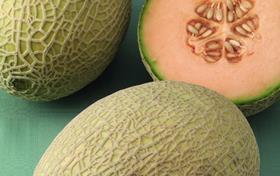
The Australian melon industry has worked hard to maintain its presence in export markets in the face of the significant challenges of the last two years.
The onset of Covid-19 and the ensuing restrictions and supply chain disruptions saw exports decrease 40 per cent year-on-year in the 20/21 financial year (12 months ending 30 June 2021). Then in December 2021 key production areas in Queensland were hit by poor weather.
Despite these setbacks, the industry has been committed to staying connected with its international customers, adapting and utilising the International Freight Assistance Mechanism (IFAM)to navigate a new logistics landscape.
Melons Australia chief executive Johnathon Davey said IFAM had allowed Australian melon exporters to remain connected to key markets including New Zealand, Singapore, the UAE and Japan during the pandemic.
“The IFAM team have been really proactive and on the ball,” Davey said.
“The programme has allowed us to stay connected to our existing markets in the short term while the industry looks to adapt its operations to new-look supply chains.”
The Australian melon industry consists of approximately 200 growers producing approximately 189,000 tonnes of melons annually across an area of around 8,500ha
The major melon types produced in Australia are rockmelons, honeydew melons and watermelons. Growers also produce various specialty melon lines for export and local markets, including the Piel de Sapo and Orange Candy varieties.
Davey said the industry was traditionally more reliant on seafreight but had looked to more airfreight options as a result of the changing transport landscape around the world.
“There’s been a 50/50 split between airfreight and seafreight at the moment,” Davey noted.
“I think we will see more innovation and adoption of new technology moving forward as the industry adapts to the new normal and finds the best mix between air and seafreight.”



